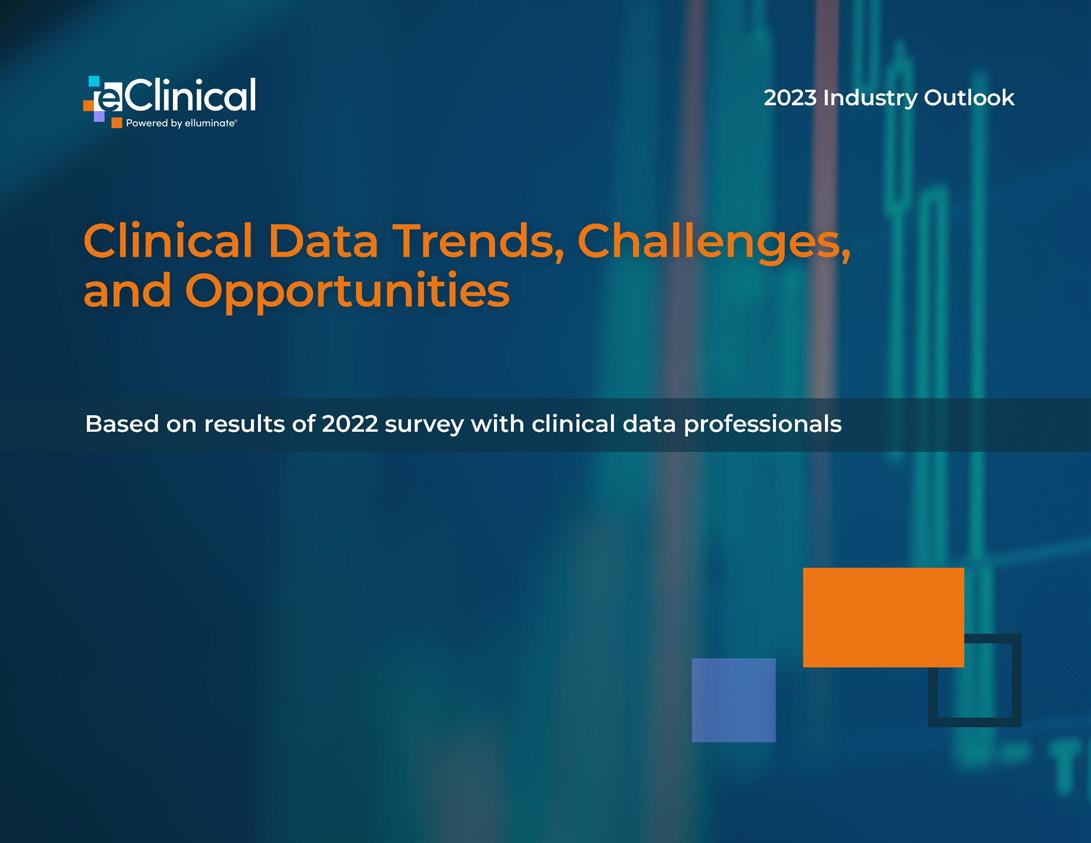
3 minute read
Transformation: People
The complexity of the current data environment including data source variety, adaptive trial designs, and analytical tools, means that biometrics roles are evolving beyond their traditional scope. With most clinical data now generated outside Electronic Data Capture (EDC), the role of the siloed data manager, focused on cleaning and querying listings of EDC data, is firmly in the past. Instead, data management roles are transforming into technically advanced and influential ‘data stewards’, planning and executing the data strategy and adept at leveraging technologies for data acquisition, organization, management and analysis. Similarly, biostatisticians and statistical and clinical programmers have multifaceted and instrumental parts to play, with the need to align across the biometrics team, and collaborate closely with other clinical stakeholders. This evolution in skills and attributes in turn impacts on how organizations must approach recruitment, retention and training.
Talent attraction and retention
As the demand for specialized skills and experience increases, sponsors must be strategic in their recruitment efforts to succeed in a highly competitive, candidateled market. In addition to traditional recruiting channels, organizations can use social media and professional networking sites to connect with potential candidates. They can also partner with specialized recruiting firms that have experience and established networks in the biometrics field to find top talent. Specialist biometrics services providers help sponsors to access hard-to-hire talent and expertise through tailored FSP (Functional Service Provider) outsourcing models.
With new roles and responsibilities emerging, many biometrics leaders are reassessing their hiring criteria and job descriptions to attract candidates with the desired skill sets. For example, as the demand for data science, advanced analytics and machine learning expertise increases, organizations may need to broaden their scope to include candidates with broader quantitative backgrounds.
Alongside these considerations, soft skills, and the ability to leverage technology are becoming more highly emphasized and sought-after characteristics. By taking a strategic approach to talent acquisition and investing in building a diverse and skilled workforce organizations can position themselves to navigate the rapidly evolving biometrics landscape.

Retention is also a key area of focus. A culture of professional development shows a commitment to employees’ growth and development leading to increased job satisfaction and retention. Equipping staff with the skills they need to adapt to the changing landscape helps to maximize retention and minimize the institutional knowledge loss associated with turnover. At eClinical Solutions, we have been able to achieve high levels of biometrics staff retention through holistic training initiatives and giving team members the freedom to pursue strategic, innovative work alongside operational delivery.
Read our Industry Outlook 2023 to learn how your peers are responding to clinical data trends, challenges, and opportunities.

Training
With the breadth of skills required spanning technical, technology and soft skills, developing a strong biometrics team in this new environment requires targeted and customized training programs that focus on the specific requirements of the evolving roles. For example, statistical programmers will increasingly draw on programming languages beyond SAS, such as R, alongside the development of new skills in machine learning and artificial intelligence. For biostatisticians, exposure to adaptive trial designs and Bayesian methods is important. In addition to technical training, soft skills such as project management, communication, and leadership are increasingly important in a modern biometrics environment which relies on collaboration between multiple internal and external stakeholders to succeed.


Building a culture of innovation and collaboration

eClinical Solutions’ Industry Outlook 2023, uncovered that one of the frustrations that clinical leaders experience with their service providers is a lack of innovation. With the fast pace of change, it’s important to be intentional about creating a culture of innovation to drive progress and support the adoption of new technologies.
To achieve this innovation-led culture, biometrics leaders can encourage their team members to be curious, experiment, and think creatively. Opportunities for professional development and training, cross-functional collaboration, and a transparent communication environment all contribute to a more forward-thinking, receptive environment where new ways of working can thrive.
Leveraging external partnerships and collaborations for specialized expertise
Many biometrics functions rely on external partnerships and outsourcing to manage capacity, increase efficiency, and access specialist expertise. Increasingly, with the data environment becoming ever more involved, demanding deep expertise, organizations are choosing specialized, data-focused outsourcing partnerships to handle their data management, biostatistics and statistical programming work, rather than a ‘full-service’ outsourcing approach. By working together with specialized partners, biopharmaceutical sponsors can optimize their biometrics infrastructure and successfully navigate the complexities of digital and complex clinical trials.
Regardless of the type of partnership chosen, it is important for pharmaceutical sponsors to carefully consider the capabilities and technologies of their partner organizations and ensure that their goals are aligned. Effective partnerships are built on a foundation of collaboration, communication, and trust, providing clear roles and responsibilities for each partner, with a robust governance structure and oversight capabilities.




